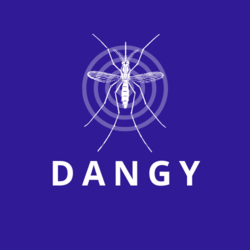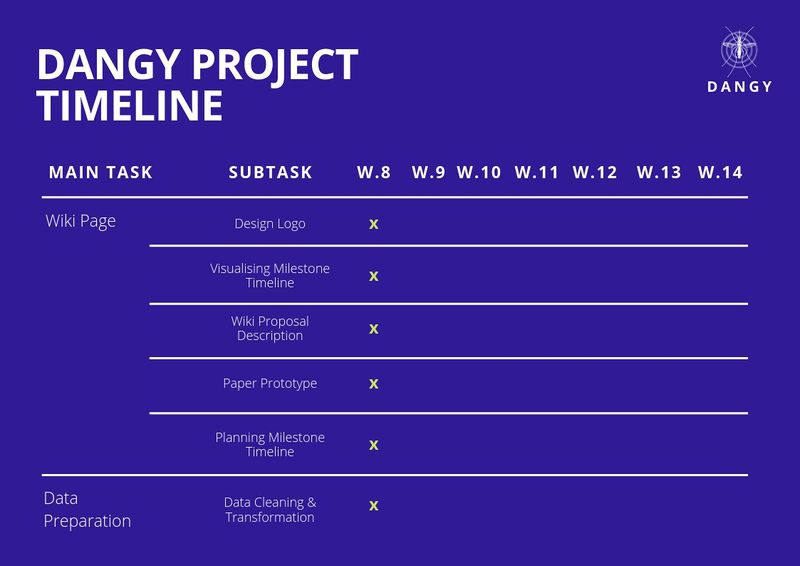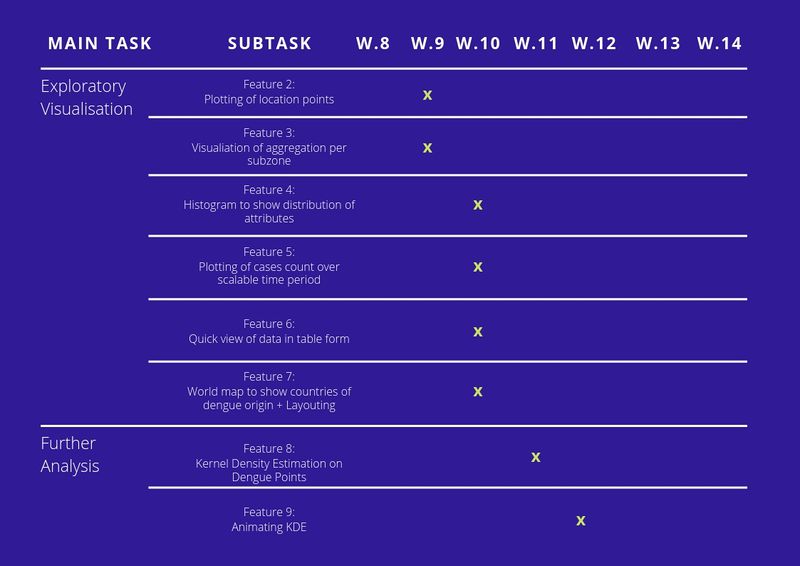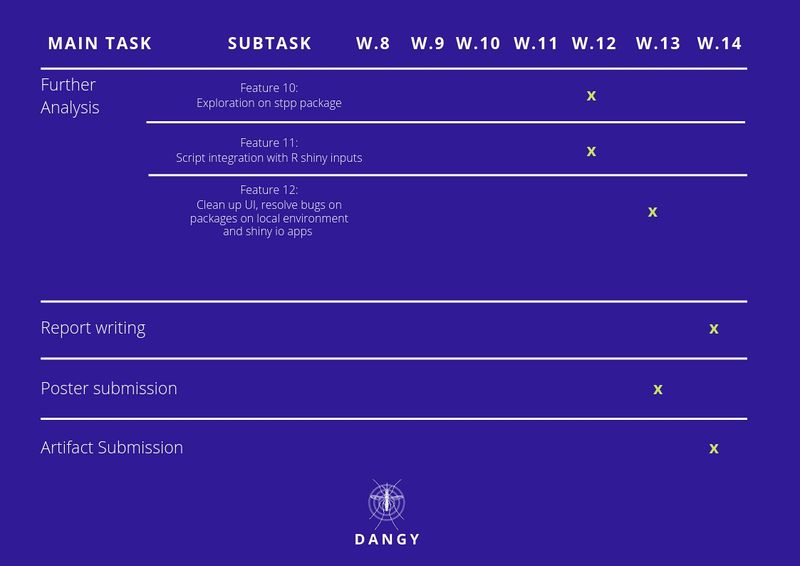Difference between revisions of "Dangy"
| Line 40: | Line 40: | ||
{| style="background-color:#ffffff ; margin: 3px 10px 3px 10px; width="80%"| | {| style="background-color:#ffffff ; margin: 3px 10px 3px 10px; width="80%"| | ||
| − | | style="font-family:Open Sans, Arial, sans-serif; font-size:24px; border-top:solid #ffffff; border-bottom:solid #7A9FC4" width="1200px" | | + | | style="font-family:Open Sans, Arial, sans-serif; font-size:24px; border-top:solid #ffffff; border-bottom:solid #7A9FC4" width="1200px" | Introduction |
|} | |} | ||
Dengue fever has for centuries been a prominent epidemic disease that plagued humanity. While normal dengue infections take approximately a week to recover, complications like dengue haemorrhagic fever and dengue shock syndrome can be extremely severe, causing death. Today, even with our advanced healthcare and technology, there remains no proper cure or vaccine to combat the disease. This has allowed dengue fever to stay rampant in both developed and developing countries. | Dengue fever has for centuries been a prominent epidemic disease that plagued humanity. While normal dengue infections take approximately a week to recover, complications like dengue haemorrhagic fever and dengue shock syndrome can be extremely severe, causing death. Today, even with our advanced healthcare and technology, there remains no proper cure or vaccine to combat the disease. This has allowed dengue fever to stay rampant in both developed and developing countries. | ||
| Line 48: | Line 48: | ||
We can see that dengue fever cannot be underestimated. Like any other epidemical diseases, it can have a ripple‐effect on its transmission resulting to an exponential increase of cases. Maintenance and prevention should always be done in order to reduce the possibility of its spread. This is especially so, considering how there are no vaccine or specific therapy for dengue fever. This leaves us with implementing effective control measures to combat the disease, which is what this study is about: to find potential areas where control measures can be implemented. | We can see that dengue fever cannot be underestimated. Like any other epidemical diseases, it can have a ripple‐effect on its transmission resulting to an exponential increase of cases. Maintenance and prevention should always be done in order to reduce the possibility of its spread. This is especially so, considering how there are no vaccine or specific therapy for dengue fever. This leaves us with implementing effective control measures to combat the disease, which is what this study is about: to find potential areas where control measures can be implemented. | ||
| + | {| style="background-color:#ffffff ; margin: 3px 10px 3px 10px; width="80%"| | ||
| + | |||
| + | | style="font-family:Open Sans, Arial, sans-serif; font-size:24px; border-top:solid #ffffff; border-bottom:solid #7A9FC4" width="1200px" | Project Description | ||
| + | |} | ||
| + | |||
| + | This project will develop an exploratory solution that supports the study of how dengue fever spread. The tool will also offer historical data of various types, like patient demographics, for users to refer to as they study the spatial temporal patterns of how the disease spreads. Through this, the tool will empower users to analyse the disease quickly and offer insight for authorities to take appropriate measure to prevent the breeding of dengue. For our project, we will be build our tool specifically for Taiwan. This is because data for dengue fever in Taiwan is readily available for analysis. Also, considering how Taiwan has a good mix of different settlements and terrains, it is a good region for us to build our application upon. | ||
| + | |||
| + | Using the developed tool, the project will also provide an analysis offering an intuition of how dengue fever spread across Taiwan. Through identifying and studying the transmission patterns of dengue over time, this project will help us better understand patterns and discover strategies on how to curb with epidemics in future & steps to prevent Dengue in Taiwan and similar states. | ||
<br> | <br> | ||
| Line 84: | Line 92: | ||
</tr></table> | </tr></table> | ||
| − | + | | style="font-family:Open Sans, Arial, sans-serif; font-size:24px; border-top:solid #ffffff; border-bottom:solid #7A9FC4" width="1200px" | Academic References | |
| − | |||
| − | | style="font-family:Open Sans, Arial, sans-serif; font-size:24px; border-top:solid #ffffff; border-bottom:solid #7A9FC4" width="1200px" | | ||
|} | |} | ||
| − | |||
| − | |||
| − | |||
Revision as of 18:01, 14 April 2019
| Group Members |
Ang Kah Eng
Jerry Obadiah Tohvan
Tan Kai Xiang, Terence
| Introduction |
Dengue fever has for centuries been a prominent epidemic disease that plagued humanity. While normal dengue infections take approximately a week to recover, complications like dengue haemorrhagic fever and dengue shock syndrome can be extremely severe, causing death. Today, even with our advanced healthcare and technology, there remains no proper cure or vaccine to combat the disease. This has allowed dengue fever to stay rampant in both developed and developing countries.
Consider Taiwan, a country that has proven itself through its evident economic growth and development. Even with healthcare services that meets international standards, Taiwan continue to stay susceptible to dengue fever. In fact, One of Taiwan’s health catastrophe was the 2015 dengue outbreak. From 2015 to 2016, there were 15,732 DF cases reported. Then, amongst the reported cases, 136 of them resulted in dengue haemorrhagic fever (DHF), of which 20 patients died.
We can see that dengue fever cannot be underestimated. Like any other epidemical diseases, it can have a ripple‐effect on its transmission resulting to an exponential increase of cases. Maintenance and prevention should always be done in order to reduce the possibility of its spread. This is especially so, considering how there are no vaccine or specific therapy for dengue fever. This leaves us with implementing effective control measures to combat the disease, which is what this study is about: to find potential areas where control measures can be implemented.
| Project Description |
This project will develop an exploratory solution that supports the study of how dengue fever spread. The tool will also offer historical data of various types, like patient demographics, for users to refer to as they study the spatial temporal patterns of how the disease spreads. Through this, the tool will empower users to analyse the disease quickly and offer insight for authorities to take appropriate measure to prevent the breeding of dengue. For our project, we will be build our tool specifically for Taiwan. This is because data for dengue fever in Taiwan is readily available for analysis. Also, considering how Taiwan has a good mix of different settlements and terrains, it is a good region for us to build our application upon.
Using the developed tool, the project will also provide an analysis offering an intuition of how dengue fever spread across Taiwan. Through identifying and studying the transmission patterns of dengue over time, this project will help us better understand patterns and discover strategies on how to curb with epidemics in future & steps to prevent Dengue in Taiwan and similar states.
| Data Sources |
| Data | Source | Remarks |
|---|---|---|
| Taiwan Main Island (level I administrative boundaries) | data.gov.tw | Municipality, county and city level I administrative boundaries of the main Taiwan island retrieved from the Ministry of Interior Land Surveying and Mapping Center. |
| Taiwan Boundaries (level III administrative boundaries) | Map Store | Municipality, county and city level III administrative boundaries of the greater Taiwan region retrieved from the National Land Surveying and Mapping Center (Ministry of the Interior) |
| Taiwan's Daily confirmed dengue cases | Data Portal | Dengue daily confirmed cases since 1998 retrieved from the Taiwan CDC (Centers for Disease Control) |
| style="font-family:Open Sans, Arial, sans-serif; font-size:24px; border-top:solid #ffffff; border-bottom:solid #7A9FC4" width="1200px" | Academic References |}
| Project Timeline |



